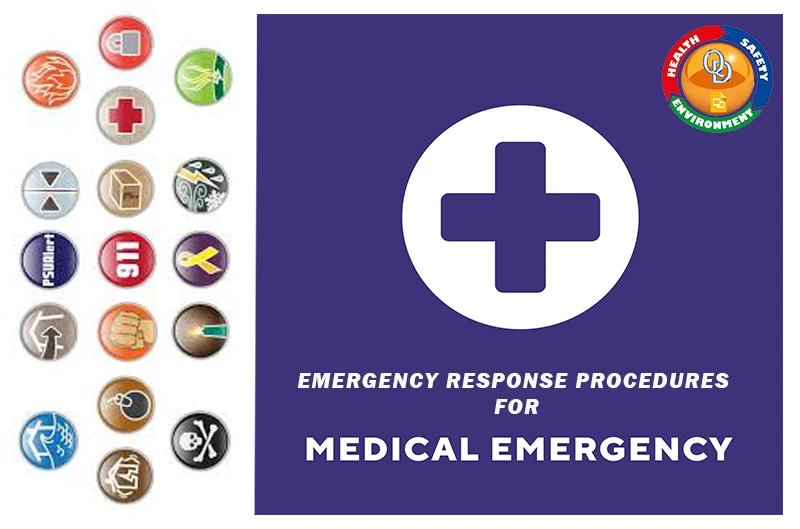1. Procedural steps
1.1. Procedure for Medical Emergencies
Medical Emergencies (ME) may include:
⦁ Electric shock,
⦁ Heat burn,
⦁ Bleeding,
⦁ Fractures,
⦁ Poisoning
The following are some basic principles to follow for personnel physical injuries.
a. To get in-time medical assistance, Call 999/911, etc if severe illness or injury is possibly life-threatening. E, g, life-threatening emergencies might include, but would not be limited to the following:
⦁ Severe chest pains,
⦁ Uncontrolled bleeding,
⦁ Loss of consciousness,
⦁ Behavior that is violent.
b. Contact Emergency Response Team (This includes security guards or employees who are trained in first aid/ CPR, and Office of Medical Services staff members).
c. Emergency Response Team may provide basic first aid or Cardiopulmonary resuscitation (CPR) until Emergency Medical Services (EMS) is able to take over.
d. Ask the person what happened to them first, if they are conscious. Search for possible signs of physical injury if the person is unconscious and/or unresponsive.
e. Carefully observe and identify and/or remove any dangers to the health and safety of the victim or others in the facility or vicinity.
f. DO NOT move or shift the injured victim unless their life is endangered by their current location.
g. If an individual has received an electrical shock, shut down the power first, if possible. Do not touch the person with bare hands. Use non-conductive materials such as wood, glass, or rubber to pull the person away from the electric contact.
h. If bleeding from minor cuts, flush with water to avoid contamination and treat with first aid supplies. If any skin cuts are more critical and or serious, get help and call for medical assistance.
i. Attend to the victim as required until someone more competent, skilled, and qualified can take over (this may just be talking to them reassuringly or holding their hand). If conscious, ask for permission before giving care.
j. Take note of specifics (who was involved, what happened, when did it occur, where did it occur). This information may be needed by EMS, ERT, EHS, or HR.
k. Double-check that someone is at the gate to meet EMS.
l. Reduce unnecessary student and employee traffic around the area.
m. An incident report must be completed within 48 hours by the designated EHS coordinators of the area in which the incident occurred. In time and proper Statements should be get/obtained by others involved and witnesses.








0 Comments